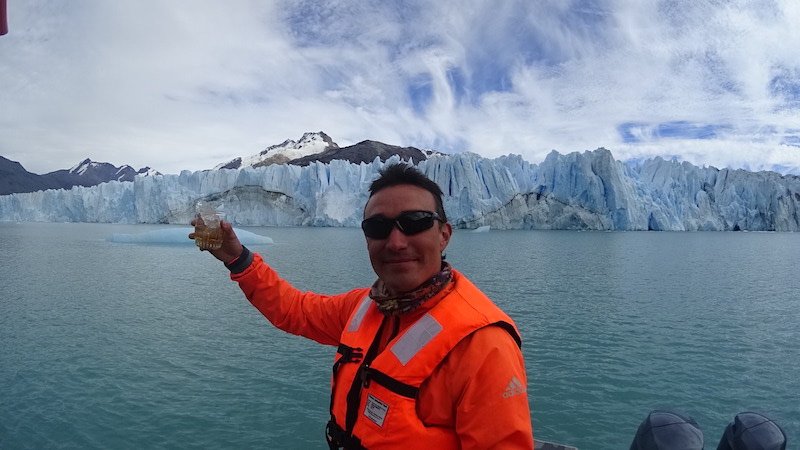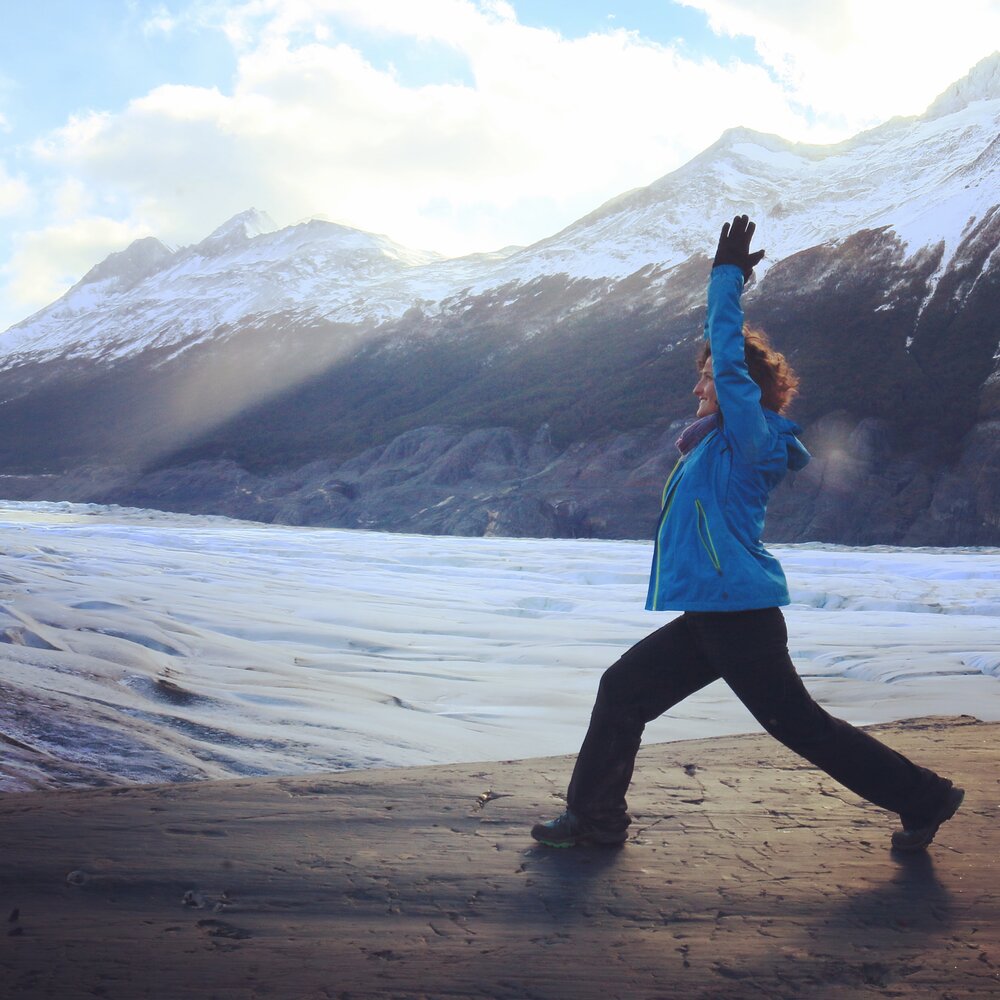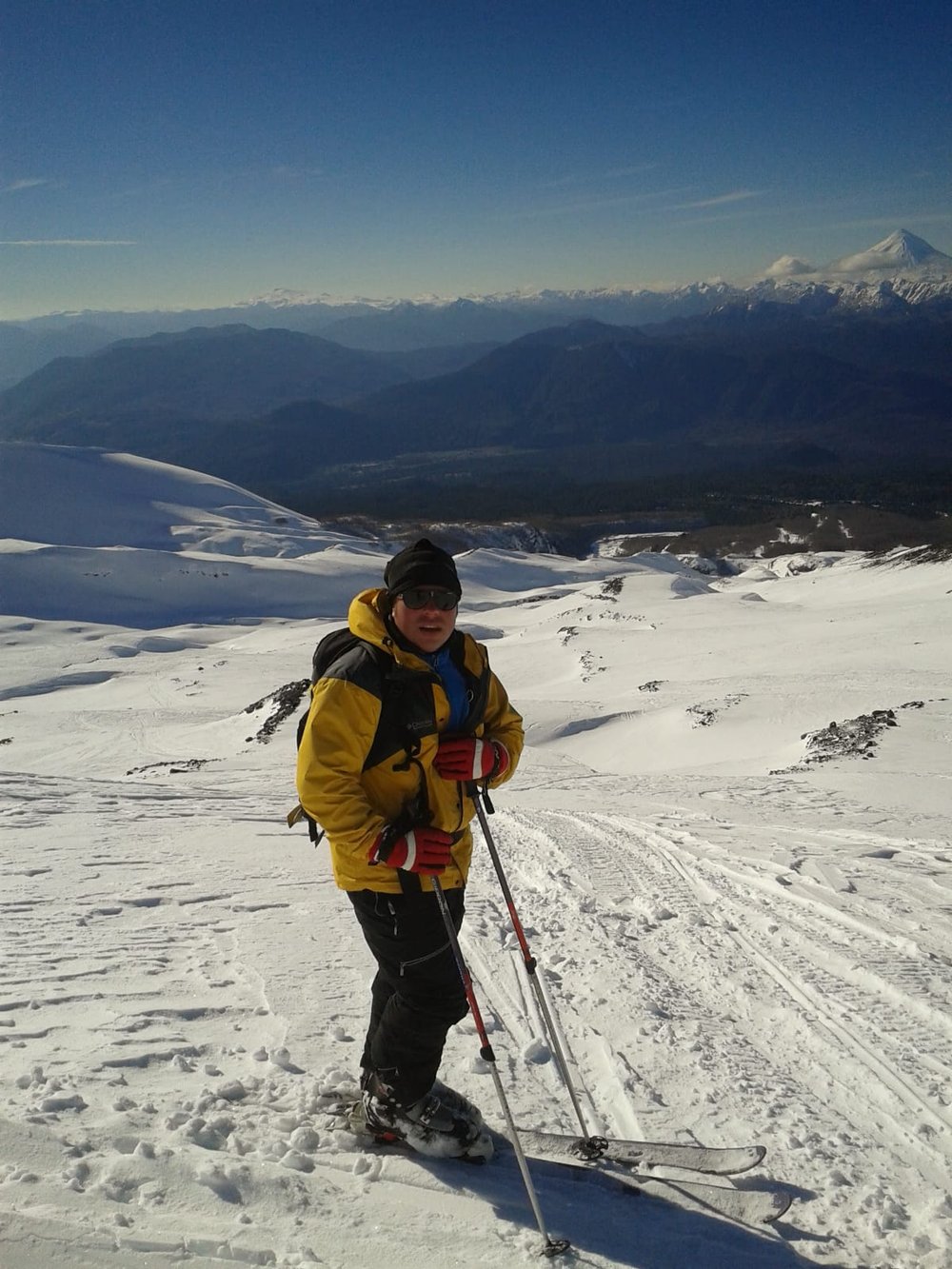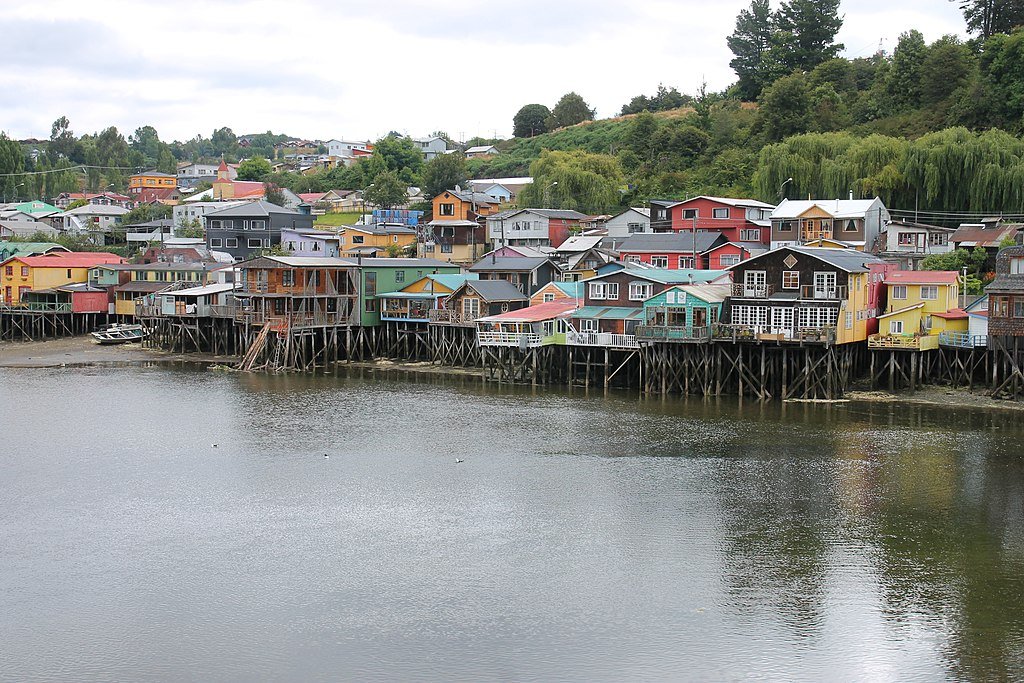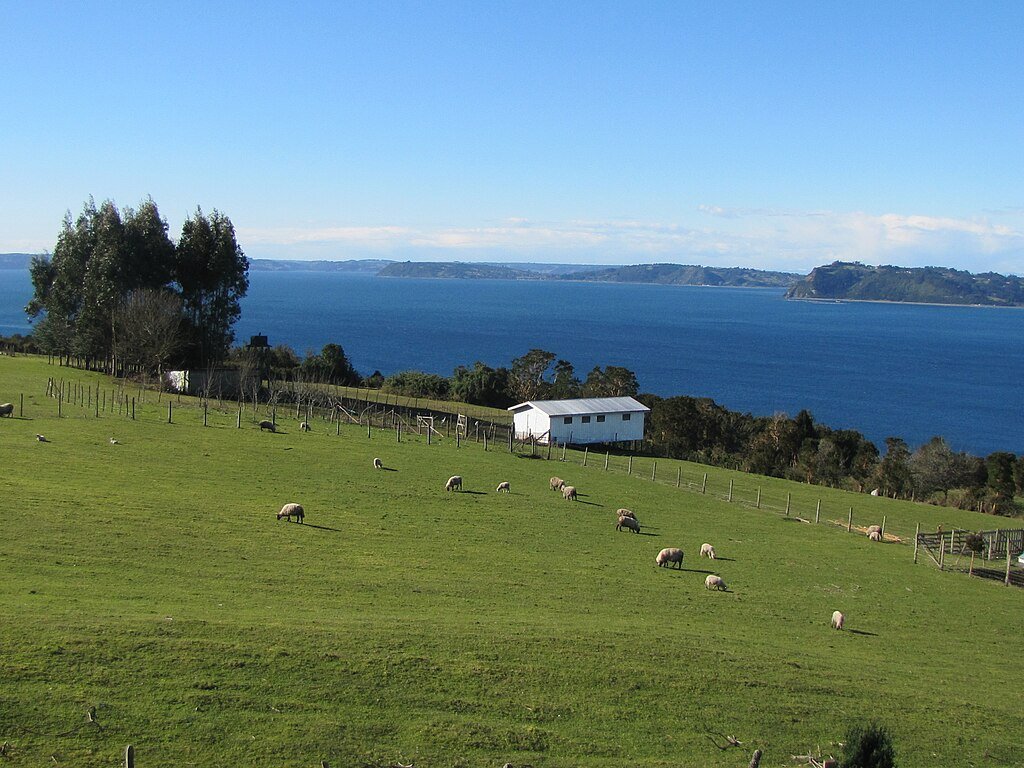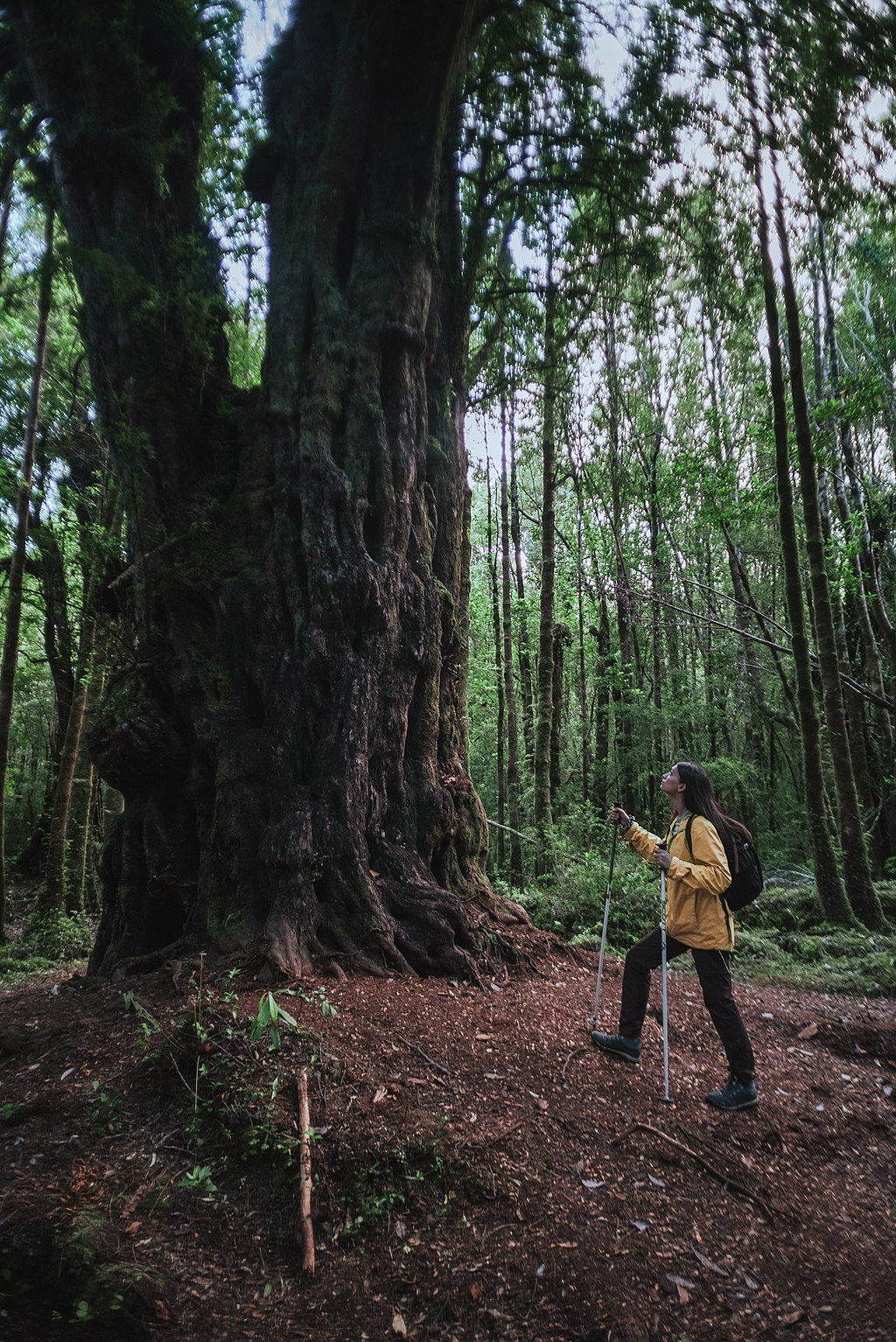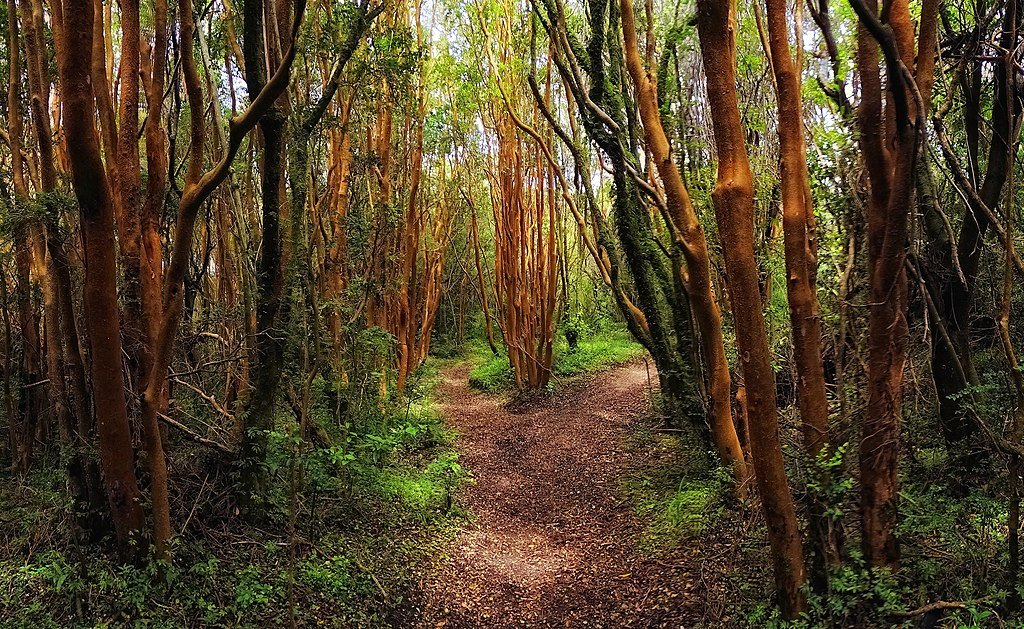A Local’s Guide to Visiting Chiloé, Chile
Chiloé Island is one of the favorite holiday destinations for Chileans and international visitors alike. Part of the Chiloé Archipelago, it’s the main island of the group and is roughly the same size as Puerto Rico.
On the island, you’ll find colorful stilt houses, lush forests, traditional seafood, and beautiful rivers and lakes. Blessed with gorgeous nature, much of it still largely undeveloped, this is a fantastic place for outdoor activities activities such as birdwatching, horseback riding, kayaking, and trekking.
The archipelago is also a cultural melting pot, combining traditions from the Huilliche native peoples, the Jesuit priests who set up missions in the area, and the fishing villages that flourished here over the centuries.
Chiloé even has its own set of myths and legends, which include ghost ships and creatures that guard the caves where evil warlocks dwell.
And despite the island’s beauty and historical and cultural attractions, it has not succumbed to anything approaching overtourism, so Chiloé is still a place where you can escape for a peaceful respite in nature.
More Chile travel info:
For more information on visiting Chile, check out our list of 17 places to visit and this guide on where to go in Patagonia.
And if you could use some one-on-one help planning your trip, schedule a Chile travel consultation with one of our Local Experts!
Table of contents
Introduction to Chiloé
Why visit
Where is Chiloé
How to get there
When to visit
How long to spend
Where to stay
Transportation and how to get around
Best places to visit
Things to do in Chiloé
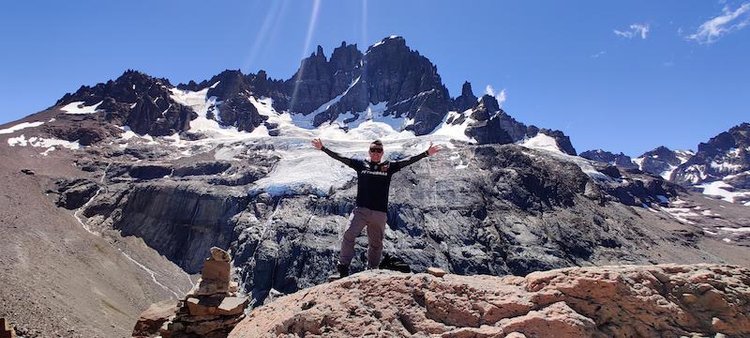

Introduction to Chiloé
Mountains, lakes, fjords, coastal towns, and over 30 small islands make up the Chiloé Archipelago, located in the Lake District in southern Chile. Chiloé Island, the largest one, covers an area of 3,241 square miles, approximately the size of Puerto Rico.
The Chiloé Archipelago has a population of around 171,487 people, who mainly rely on fishing, tourism, and agriculture for their sustenance. Most inhabitants live in four cities located in the northern and eastern shores of the island: Ancud, Castro, Chonchi, and Quellón. These cities are also the starting points for land and sea excursions in the area.
This was originally the land of the Huilliche native peoples, a branch of the Mapuche peoples who specialized in fishing along the islands’ coasts.
However, in the mid-1500s, the island was colonized by the Spanish, and then around 1608, the first Jesuit priests arrived here and built their missions and wooden churches, many of which are still standing and are considered to represent a unique type of local architecture (that’s why 16 of these churches were declared a World Heritage Site in 2000).
Why visit
Nature: Because of its isolated nature, Chiloé has features that are quite unique to it and which attract all types of visitors, especially during the summer months.
The island has two mountain ranges, Piuchén and Pirulil, which cut across the terrain from the northwest to southeast. Even so, these are not massive or extensive mountains, and they are not the defining features of Chiloé. Rather, much of the island, especially to the northeast, is characterized by low, rolling hills, and vast plains where you can still find remnants of Chile’s most ancient native rainforest: the Valdivian temperate forest.
The western coast has steep cliffs that drop straight into the sea, and the southwestern portion of the island is covered with expansive forests and marshlands. while the shores on the eastern side of the island are far more gradual and harbor several river mouths which create amazing beaches and great birdwatching sites.
Active travelers and adventure sport enthusiasts can partake in all types of activities, such as horseback riding in Chiloé National Park and the Piuchén mountain range, kayaking in Lake Cucao and the San Pedro River, and trekking in Chiloé National Park.
Culture: If you’re interested in local culture, you will enjoy sailing around the coastal towns of the archipelago on the “island route”, or visiting some of the old wooden buildings in the Ruta de las Iglesias (Churches of Chiloé route).
Cuisine: Chiloé is also known for some interesting typical foods. The island’s most famous dish, the curanto en hoyo, is a mix of meats (beef, pork and chicken), seafood (mussels and clams), and vegetables (potatoes, carrots, etc.) cooked in a fire pit that is dug into the ground and covered with rhubarb leaves.
Chiloé is home to more than 280 varieties of potatoes, which are among the most important ingredients of the curanto (and other dishes).
Another famous vegetable from this island is the elephant garlic, which is much larger and stays fresh for longer than regular garlic. It’s considered to be one of the world’s superfoods. If you have the chance, you should also taste the oysters, which are locally grown and are another important product in Chiloe’s gastronomy.
Textiles: Additionally, Chiloé is famous for its cozy clothes knitted from wool and often dyed with natural ingredients. You’ll find these garments in any of the many handicraft markets around the island.
Where is Chiloé
Chiloé is located in the final section of southern Chile’s Lakes District, approximately 700 miles south of Santiago, the nation’s capital and 60 miles south of Puerto Montt, the capital city of the Los Lagos Region.
The island is very close to the mainland, but is separated from it by the Gulf of Ancud. The Chacao Channel is where the island is closest, just 15 miles offshore.
This is also where you’ll find the ferries to/from Chiloé, which travel regularly between the mainland town of Pargua and the island town of Chacao.
How to get here
Chiloé is rather remote, but it’s still relatively easy to get there. The traditional route, and the only one available until a few years ago, is to arrive into Puerto Montt and to then travel on to Chacao, where you can catch the ferries to the main island.
The traditional route: You can reach Puerto Montt by plane, bus, or car from Santiago. There are regular daily flights and buses between both cities. The direct flight lasts about 1 hour and 45 minutes, while the bus ride can take between 13 and 14 hours, depending on the stops made along the way. The same can be said for the car ride.
From Puerto Montt, you need to continue on to Pargua, about 40 miles away, which is the town from where the ferries depart for Chacao, in Chiloé. The ferry ride lasts approximately 35 minutes, and are free if you’re traveling without a car. If you have your own vehicle, the vessels offer different rates depending on the type and size.
Two companies offer the crossing, both of them with three or four available ships and departures every 30 or 40 minutes.
New route: A new option that is now fully operational is to fly directly from Santiago to the city of Castro, in central Chiloé. There are two to three daily flights, with departures from Santiago leaving early in the morning. The flight takes around two hours.
Note that this option is only available during the months of January, February, and March (summer), as this is the most popular time of year for people to visit the island. During the rest of the year, you’ll need to rely on the traditional route.
Some people still prefer that option anyways, because they say it’s more fun and adventurous.
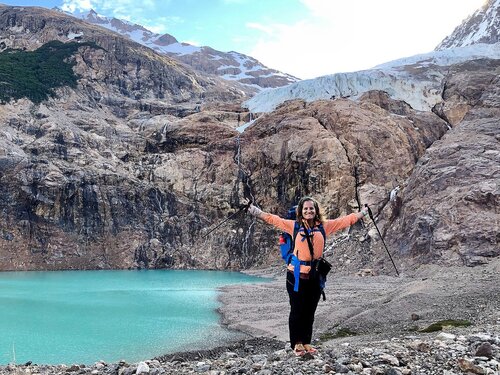
Connect with a Chile travel expert for help perfecting your itinerary, answers to all your travel questions, and fabulous local tips for a better visit!
When to visit
The best (and most popular) time to visit Chiloé is during the dry season, which runs from December through February. This is summer in the southern hemisphere, and is when you’re most likely to have good weather here.
Visitors need to be aware that Chiloé is a very rainy place, which is why it can sustain remnant patches of native Valdivian rainforest. It can even pour during the dry season, so sunny days are never guaranteed.
Visiting in dry season (December through February)
During these months, the temperatures are warm, 70° F on average, and rainfall is much lower than the throughout the rest of the year. This is the high season everywhere in Chile, Chiloé included, so all attractions, accommodations, and services will be open and in full swing.
There are also Magellanic and Humboldt penguin colonies here, and their chicks typically hatch around January, so this can be a wonderful time to visit the colonies and see the baby penguins.
Additionally, this is when most traditional festivities take place, many of them focused on food. You’ll find events highlighting Chiloé’s hundreds of potato varieties, showcasing the Patagonian style of cooking lamb on the spit, celebrating the ancient way of preparing apple cider (known as Chicha), etc. All of the festivals also include handicraft markets, local food stands, live music, and some fun competitions.
Visiting at other times of year
The weather can be rather chilly during the rest of the year, with Chiloé experiencing average temperatures of around 50° F and an annual rainfall that exceeds 118 inches. Therefore, you must be prepared to expect rain at all times when visiting.
The weather cools down after the summer months, and the. number of activities going on around the island become significantly reduced, as does the availability of services and attractions for tourists.
You also need to keep in mind that Chile has some non-renounceable holidays when all stores and services must close, as established by Chilean laws. These are: New Year’s Day (January 1st), Labor Day (May 1st), National Independence and Glory of the Army (September 18 and 19), and Christmas (December 25).
This is also the case whenever there is an election, which also prohibits restaurants and shops to sell alcohol drinks the day before.
How long to spend in Chiloé
Chiloé is pretty remote, so getting here takes quite a bit of time, and the island itself is sizable, with a lot to see and do. With that in mind, it doesn’t make sense to try to rush in, whiz around, and take off in just a day or two.
To make the most out of your time here, I’d recommend spending around 4 days on the island. This will give you enough time to see all of its iconic cultural and historical attractions, and a lot of its natural ones (although far from all).
Here’s a potential plan for 4 days:
Day 1: travel to Chiloé by flying directly to Castro or by boarding the ferry that crosses the Chacao Channel. What you do on this first day will depend on where you arrive into.
If you cross the channel and arrive in Chacao, you should immediately head to the Puñihuil Islets Natural Monument on the northern part of the island, which protects Magellanic and Humboldt penguin colonies. Here, you can take a bat trip to see the penguins and other marine birds, as well as whales.
Next, head on to the town of Ancud and visit its main square, its museums, and/or the Spanish forts route.
Afterwards, make the 1.5 hour drive south to Castro, which is be the best logistical base for further exploring the island.
The other option for Day 1, if you’ll be flying directly into Castro, is to spend the day exploring the town and nearby coastline. Begin your visit by strolling around the city’s the downtown area. In the main square, admire one of the 16 churches declared World Heritage Site, Iglesia San Francisco (St. Francis Church).
You can also visit the municipal museum, the handicraft and farmer’s market by the shore, and take a boat ride to photograph the colorful palafitos houses.
Day 2: I suggest you head south from Castro to visit Chonchi and some of the must-see attractions located inland and on the western coast. These include Lake Huillinco, the small town of Cucao (and the Muelle de las Almas pier), and Chiloé National Park.
This is a full-day excursion that will take approximately 10 hours. In the evening, return to Castro and spend the night there.
Day 3: Get an early start and make your way to Dalcahue, where you can catch a ship to take you out to the archipelago’s smaller islands. Among them, Quinchao, Llingua, and Caguach all have beautiful architecture and landscapes, as well as traditional celebrations that you can enjoy, especially during the summer.
Dalcahue also has a great handicraft market, where vendors from all over the archipelago come to sell their wares.
Day 4: Today I would suggest a visit to Quellón, where you can book a 4.5-hour guided navigation to the Gulf of Corcovado to watch whales and other marine wildlife.
With more time on the island, you can add in a visit to Parque Tantuco, on the far southern end of Chiloé. This requires some planning though, due to the park’s remote location.
You can reach the park by sailing from Quellón to Caleta Inío, but the boats make only two trips in each direction during the week, so you’ll need to confirm the exact days and times and then plan to spend at least one night in the park.

Where to stay - best bases
Palafitos houses in Castro. Photo: Draceane, CC BY-SA 4.0, via Wikimedia Commons
There are four major cities in Chiloé: Ancud, Castro, Chonchi, and Quellón. However, I recommend Ancud and Castro as bases and the other two as connection hubs, depending on what tours you’ll want to go on.
Ancud
Located only 19 miles away from Chacao, Ancud is the closest city to the ferry port.
With a population of approximately 42,516 people, Ancud is a place where you can find all kinds of services and also the gateway to many attractions on the northern and western shores of Chiloé. Stay at least 1 night here to make the most of this destination, considering that some excursions might take a full day of your itinerary.
Castro
The other base I recommend is Castro, located 50 miles south of Ancud, on the eastern shore of Chiloé. This is the starting point for tours to the area’s most iconic sites and where the majority of tour operators are based out of.
With a population of approximately 48,482 people, in Castro you’ll also find all kinds of services, as well as the only airport on the island, servicing flights to and from Santiago (only between December and February). Stay at least two nights in Castro to really get to enjoy the surrounding attractions.
Transportation and how to get around Chiloé
Public transportation
Getting around Chiloé is fairly easy and there are regular buses to almost every location of touristic interest. ETM and Queilén are the main bus companies servicing the island and they have departures almost every hour between Ancud and Castro.
You’ll find departure times and rates displayed at their counters at the bus stations, and if you want to book ahead of time, you can browse these sites featuring both Spanish and English dashboards: https://kupos.cl/en and https://www.recorrido.cl/en
To get to smaller towns and locations like Dalcahue, Chonchi, and Quellón, there are minibuses with departures every 15 or 30 minutes from both Ancud and Castro. You’ll have to check routes and timetables at the bus stations and pay at the corresponding ticket booth in cash.
Renting a car
While public transportation is pretty good, if you want to be able to get everywhere and fit in as much as possible each day, then I suggest you rent a car. Your best bet is to rent a car at the airport in Puerto Montt, on the mainland, and to then bring it with you on the ferry to Chiloé.
Most roads to the main tourist attractions are paved and in good condition.
Taxis
Taxis are not very common in Chiloé, so if you need them, you usually have to call to request a ride and should do so at least half an hour in advance. Some locals informally offer transportation through various phone apps, but I would recommend using public transportation or taxis instead.
Most locals rely on the colectivos (shared taxis), which have fixed rates and routes from the downtown area in any given city to its other neighborhoods. These are black sedan cars, mostly older models, with a sign on top of their roofs displaying their route number and the main stops.
Getting around by Colectivo (shared taxis)
As mentioned just above, colectivos are a very efficient and effective way of traveling short distances in Chiloé, typically within cities/towns and their peripheries. There are no maps of their routes, but if you ask any local how to get to a prominent place in a colectivo, they will tell you which number to take and where is the closest stop.
If you see the one you need, you’ll need to flag it down. Colectivos receive passengers until they are full (maximum 4 passengers), and people can hop on and off anywhere along the route. Each time you use the route, you have to pay again.
The routes run on a loop all day (roughly from 7:00 AM to 8:00 PM) and some continue into the evening (8:00 to 11:00 PM). You always have to pay the full ticket, regardless of where you’re going. Fares can vary between colectivo lines, depending on various factors, such as their route and time of day. Nevertheless, the usual rate is $500 Chilean Pesos (CLP), approximately USD $0.60 cents.
Getting to the smaller islands
If you want to visit some of the smaller islands of the Chiloé Archipelago, you’ll have join an organized tour or inquire about the corresponding ferry times and rates. Tours and ferries depart from either Castro or Dalcahue, which is 12 miles north of Castro along the coast.
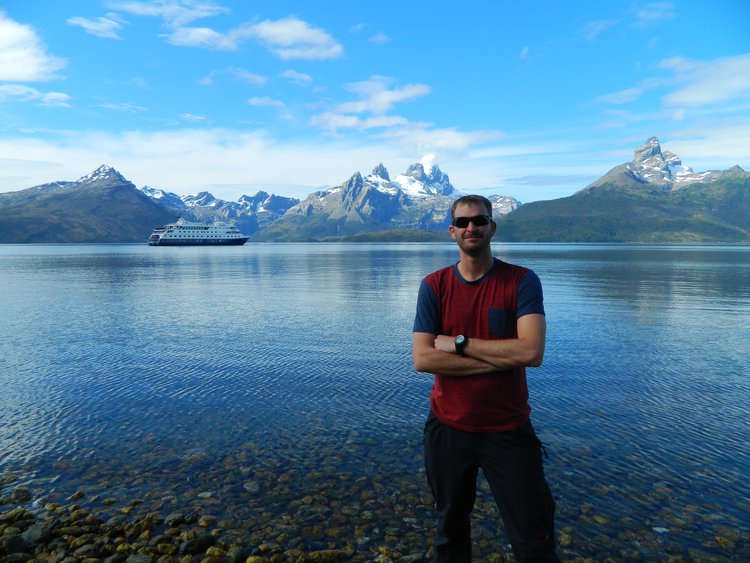
Our local experts have answers!
Connect with our Chile-based travel experts for the best local advice and expert help planning a better trip!
Best places to visit in Chiloé
The list below by no means covers everything there is to see or do in Chiloé, but it’s a very good start and covers the entire island from north to south.
1. Ancud
Ancud is a pleasant little fishing town in the north of the island, and it makes an excellent base from which to explore this part of Chiloé. Popular excursions from Ancud include trips to the Chepu Valley (great for birdwatching and kayaking), the penguin colonies at the Islotes de Puñihuil, and the “Fort Route” to see the old Spanish forts of the area.
This is also the best place to learn about Chiloé’s mythology and legends. You’ll find sculptures of local creatures in its main square, and you can also visit the Regional Museum of Ancud to see their exhibits on the island’s traditional cosmovision and history.
Four other small museums complete a very interesting heritage route:
Casa Museo Luisa Chijani - a museum housed in the former home of the woman who was Ancud’s first mayor between 1947 and 1950.
Museo Archipiélago de Chiloé (MAC) - covering the natural and cultural history of the archipelago, it also has a birdwatching tower.
Museo Cuerpo de Bomberos de Ancud - with exhibits of the first equipment and volunteers of the Ancud Firefighting Station.
Museo de las Iglesias de Chiloé - which introduces visitors to the building techniques of these churches that were declared World Heritage Site in 2000.
Keep in mind that museums are closed on Mondays in Chile.
2. Puñihuil islets
Photo: Natalia Reyes Escobar, CC BY-SA 4.0, via Wikimedia Commons
Located 17 miles northwest of Ancud, the three islets of Puñihuil form a natural monument that protects two colonies of Magellanic and Humboldt penguins who nest together (an uncommon occurrence).
To visit, you’ll need to head to Puñihuil beach, where you can board a boat and sail around the colonies. At the beach, you’ll find a fishing dock where three local families have come together to offer boat rides (from September to March, when the penguins arrive) and other ecotourism services.
Boat rides last between 30 and 40 minutes.
3. Dalcahue
About 40 miles southeast of Ancud, Dalcahue is a pleasant town with a thriving ship buliding industry and it’s also the main starting point for sailing to the nearby smaller islands of the archipelago, especially Quinchao. Dalcahue is also famous for its Sunday market, comprised of artisans and fishermen who come from other islands to sell their products.
In the town’s main square, you can visit one of the World Heritage Site churches, Iglesia Nuestra Señora de los Dolores (Our Lady of Sorrows Church). From there, you’ll have great views of the Dalcahue Channel.
4. Quinchao Island
Photo: Lin linao, CC BY-SA 4.0, via Wikimedia Commons
This is the largest of the smaller islands of Chiloé. Its main city is Achao, known for its houses covered with larch shingles and for having the archipelago’s oldest church, Iglesia Santa María de Loreto de Achao (Our Lady of Loreto of Achao Church), dating from 1764.
Achao is surrounded by hills that provide great views of the nearby islands of Llingua (which you can also visit to get photographs from both sides) and Linlín. It’s also a place where many traditional festivities are held, including the lamb festival in December and the potato festivity in January. Curaco de Vélez is another town worth visiting on the island.
The island’s bay has been declared a Natural Sanctuary because of its importance for migratory and resident birds and there’s a special birdwatching walkway within it. The town holds the Festival for Migratory Birds each year on the last weekend of March to celebrate the end of the summer.
From Quinchao Island, you can also visit some of the smaller islands: Llingua, known for its basketry made from vegetable fibers; Caguach, also called island of devotion due to its annual celebration of Jesus the Nazarene on August 30; and Apiao, one of the largest islands and a place with huge native trees.
5. Castro
Castro, about 10 miles south of Dalcahue, is the largest town on the island and along with Ancud, it is the other major logistical base. It’s a bit grittier than Ancud and many visitors find it less pleasant, but it’s an excellent place from which to explore the more southern parts of Chiloé. Many tour operators have their offices here, so it’s very convenient if you want to join organized tours/excursions.
While you wouldn’t expect this based on the lack of traditional architecture, Castro is actually one of the oldest cities in Chile! In town, you can admire another of the 16 World Heritage churches, Iglesia San Francisco (St. Francis Church). It’s located in the city’s main square and is the main Catholic temple in Chiloé. It was destroyed and rebuilt several times, and the current structure was built between 1910 and 1912.
You can also take a short boat ride to have great views of the palafitos (stilt houses) along the coast. These houses are painted in colorful hues and provide one of the most iconic images associated with Chiloé. They are unique, sturdy constructions supported by stilts and hanging over the water, which lets the fishermen access their boats quickly in the mornings to make the most out of the work day.
6. Chonchi
Waterfront houses on the lower level of Chonchi. Photo: Juanito1986, CC BY-SA 3.0, via Wikimedia Commons
A short distance south of Castro, the city of Chonchi has a lovely municipal market with handicrafts and local products. There is also a unique accordion museum, showcasing over 60 pieces of this instrument, which is key to the traditional music of the island.
It is also known as the Three-Story City or City of Three-Levels. The first level corresponds to the port and seaside walkway, full of handicraft stands; the second level holds the urban architecture and the city museum, while the third level has the main square, where you can find the Iglesia San Carlos de Borromeo (Saint Charles of Borromeo Church), another one of the 16 World Heritage churches. This church was built between 1754 and 1859.
7. Lemuy Island
Right next door to Chonchi is the Huicha pier, which provides regular transportation to and from Lemuy Island. This is considered one of the most beautiful islands of the archipelago, and it’s a great place to visit for both adventure and relaxation seekers.
Here, you’ll find 3 of the 16 World Heritage churches: Aldachildo, Detif, and Ichuac, and there are also several small parks with all kinds of activities, including mythology treks, zip lines, agrotourism, fishing, and cooking with locals.
Looking out at the main island of Chiloé from Lemuy and across the Lemuy Channel. Photo: Lin linao, CC BY-SA 4.0, via Wikimedia Commons. Cropped from original.
8. Cucao
Muelle de Las Almas in Cucao. Photo: Alex Valencia Romero, CC0, via Wikimedia Commons
This is the main town on the western shore of Chiloé Island. About 2 miles west of Chonchi, the town of Cucao is the gateway to visit two of the island’s main attractions:
If you head north, you’ll reach Chiloé National Park, which is a public protected area, while heading south will take you to Tepuhueico Park, a private protected area.
The town itself is nothing to write home about, but you will inevitably wind up here at some point, so it’s worth mentioning. The nearby Muelle de Las Almas pier (pictured above) is its most famous attraction.
9. Chiloé National Park
Photo: littletroll, CC BY-SA 3.0, via Wikimedia Commons. Cropped from original
Chiloé National Park covers about 170 square miles, much of it running along the Piuchén mountain range. The park is almost entirely untouched by man, and includes Valdivian temperate rainforest, marshlands with swamps and peat bogs, extensive dunes, and wild coastline.
To do it justice, you would need around 3 or 4 days here, which would give you time to explore its different sectors and set off on multiple of the longer hikes found there.
Most visitors don’t have that much time though, and a short visit is still very much possible. There are a number of shorter hiking trails that can be done in an hour or less, and those are found at the park’s main entrance, just south of Cucao (there are 3 entrances in total, but this is the primary one).
At this entrance, you’ll find the park administration office and a small visitor center along with educational trails. There are picnic and camping areas run by the native Huilliche communities. Entrance tickets must be bought ahead of time and online through the dedicated website.
For more information on the hiking trails, I’ve provided some additional details in the “Things to do” section below.
10. Tepuhueico Park
A giant tree in Tepuhueico Park. Photo: Parque Tepuhueico, CC BY-SA 4.0, via Wikimedia Commons. Cropped from original
Tepuhueico Park has four sectors focused on different ecosystems: lakes, forest, mountains, and coast. The coastal zone can be accessed from Cucao.
Heading south for about 6 miles from Cucao and you’ll reach the parking lot from where a 45-minute trail will take you to the Muelle de las Almas (Pier of the Souls). This is a recently built wooden walkway that is based on a local legend that tells how the souls of the dead would wait in this symbolic pier for the mythical boatman to take them on their last journey into the spirit world.
This has become a popular trek and photo opportunity among locals and visitors alike, so you might have to wait in line for a while to experience it. Entrance tickets for Tepuhueico Park must be purchased on their website.
11. Quellón
Heading back to the eastern shore and then continuing another 40 miles south from Chonchi, you’ll reach Quellón, the ending point of the Pan-American Highway (which starts all the way north in Alaska). This fact is marked by the monument called Hito Cero (Landmark Zero).
Residents of Quellón rely mainly on the salmon farming industry for their livelihood. Therefore, you’ll be find this fish served in most restaurants. Do not miss out on the famous Cancato de Salmón, which traditionally consists of a piece of salmon that has been barbecued with tomato and cheese. However, most restaurants nowadays prepare it by slowly baking the salmon with a cover of cheese, onions, garlic, tomatoes and sausage. The dish is usually served with the local variety of potatoes or rice.
Quellón is also the main port in the area and a connection hub with ferries offering transportation to Parque Tantauco and to the Carretera Austral (Southern Highway), where Patagonia begins back in mainland Chile.
12. Parque Tantauco
This private protected area, located in the far south of Chiloé has two sectors, one in the north and another in the south.The northern sector can be reached by land, whereas the southern sector is only accessible by ferry, multi-day hikes, or plane.
If you plan to arrive here by land, just north of Quellón, you’ll find a sign indicating a detour to the park. From there, you’ll drive for around 10 miles until you reach the Yaldad entrance, which has a visitor center and short trails that are great for a day trip. If you continue another 10 miles or so, you’ll get to Lake Chaiguata, an area with camping domes, campsites, short trails, kayak rental, and a restaurant (during the summer months). Although this journey can be done in a day, it’s recommended to stay at least one night.
The southern sector of the park is Caleta Inío, the only populated area within its borders and the most isolated community in Chiloé. Here, you’ll find the Park Guest House, a camping area, a nursery, and the Inío Museum.
This sector is not connected by roads. The only ways to get here are by trekking an inner trail that takes between four and five days to complete; boarding a plane in Castro to take a 40-minute flight on a small plane; or sailing from Quellón (this last option is only available on Sundays and Wednesdays, with return trips from Caleta Inío on Mondays and Thursdays).
For further information and bookings, check their website: https://www.parquetantauco.cl/

Connect with a Chile travel expert for help perfecting your itinerary, answers to all your travel questions, and fabulous local tips for a better visit!
Things to do in Chiloe
1. Explore the Spanish forts route from Ancud
Ancud is the starting point for an attractive route encompassing three forts (San Antonio, Real San Carlos/Polvorín, and Ahui), two artillery batteries (Chaicura and Balcacura), and the Faro Corona, a lighthouse with fantastic views of the island.
The route takes you through the sea border of the city along almost 30 miles, and it can be done during a day trip.
Canons at Fort Chaicura. Photo: Rodolfo Ditzel Lacoa, CC BY-SA 3.0, via Wikimedia Commons
2. Find the best birdwatching spots
Aside from Magellanic and Humboldt penguins, at the Puñihuil Islets Natural Monument you’ll also see other marine birds, such as kelp geese, cormorants, and shearwaters, as well as chungungos or sea otters, the world’s smallest marine mammal.
Birdwatching enthusiasts will also enjoy touring the 10 wetlands on the eastern shore of Chiloé and some of the smaller islands that are part of the Western Hemisphere Shorebird Reserve Network. These are Castro, Chullec, Curaco, Nercón, Pullao, Putemún, Quinchao, Rilán, San Juan, and Teguel. In any of these places, you’ll be able to observe curlews, whimbrels, Chilean flamingos, American skimmers, Chilean plovers, and black-necked swans.
You’ll need to take short boat trips to reach some of these sites, always on smaller vessels due to regulations in place to safeguard the biodiversity and unique ecosystems.
3. Trek among ancient native forests
Chiloé National Park and Parque Tantauco have great trails of different lengths where you can experience some of the country’s oldest native forests. The Chanquín-Cole Cole Trail is the most popular of the longer trails in Chiloé National Park, and it extends from the entrance in Cucao to Cole Cole, where there’s an extensive beach surrounded by dunes. An out-and-back hike, it’s about 12 miles in total and should take around 5 hours to complete.
You can also enjoy two shorter trails: El Tepual is a half-mile educational trail, while Dunas de Cucao is about 1 mile long and will take you to a beach with amazing dunes.
At Parque Tantauco, there are three shorter trails that can be completed in a span of two to three hours: Yaldad, Inío, and Chaiguata. They will allow you to explore the Valdivian temperate rainforest, admire some beautiful waterfalls, and learn about some of the park’s conservation projects.
There are a host of other trails that you can check out, depending on how much time you have in the park and their difficulty levels.
A trail in Chiloé National Park. Photo: Bjørn Christian Tørrissen, CC BY-SA 4.0, via Wikimedia Commons
4. Discover Chiloé on horseback
Horseback riding is one of the top experiences in Chiloé, and it’s best done in Chiloé National Park. Expert guides will give you a brief instruction and select a horse for you, and will then take you on a 90-minute ride along the dunes of Cucao, where you can observe the native vegetation and enjoy a small picnic.
Some tour operators based in Castro offer full-day horseback riding excursions along the Piuchen mountain range, the San Pedro River, and nearby coast.
5. Go kayaking on the rivers and lakes
Chiloé National Park is again the top destinations for kayaking, and it’s a lot of fun to combine horseback riding (above) with a kayaking excursion. Most kayaking trips last about 90 minutes and travel down the San Pedro River.
Some tour operators offer half-day kayaking trips from Castro to Lake Cucao, while others provide excursions from Ancud to Chepu, a tidal river and wetland in the northern sector of the park. In Chepu, you can see the sunken forest, which was flooded after the 1960 earthquake and tsunami that affected the area and is till today the worst in recorded history, also known as The Great Chilean Earthquake.
Other great places for kayaking are the Pudeto river mouth and Caulín Bay, in northern Chiloé, and Lemuy Island and Lake Tarahuín in the south.
6. Sample typical foods among locals
If you want to try traditional dishes, the markets in Ancud, Castro, and Dalcahue are the best spots to do so. Achao, in Quinchao island, is also a great place that holds several food-related events during the summer.
If you visit at a time when any of the traditional festivals take place, you’ll certainly be able to try the curanto en hoyo, which consists of a variety of meats, seafood, and vegetables cooked in a fire pit dug into the ground and covered with rhubarb leaves. The pulmay is another version of this dish but cooked in a pot on a stove.
With more than 280 potato varieties to choose from, this is an important ingredient in many preparations. Two good examples are the potato breads, milcaos and chapaleles, which are made from raw and cooked potatoes, respectively, and usually steamed with the curanto.
Don’t forget to also try the Chicha or apple cider and the licor de oro (gold liquor) - made with whey, aguardiente, saffron and lemon- which is typical of Chonchi.
7. Observe migrating whales
Chiloé is one of the best places in Chile to see whales during their migration north from Antarctica between October and March. The most commonly observed are: the blue whale, the humpback whale, the fin whale, and the sei whale.
You can take whale watching tours in two locations: the first is the Puñihuil Islets Natural Monument in northern Chiloé, where you’ll find local companies offering regular boat rides.
The second is in Queilén, about 40 miles south from Castro on the eastern side of the Island. Here, between March and June, a marine ecotourism operator offers 4.5-hour guided navigations to the Gulf of Corcovado, where the largest number of blue whale sightings in the entire southern hemisphere has been recorded.
Queilén. Photo: keilina, CC BY-SA 3.0, via Wikimedia Commons. Cropped from original




Chat with a Chile expert





